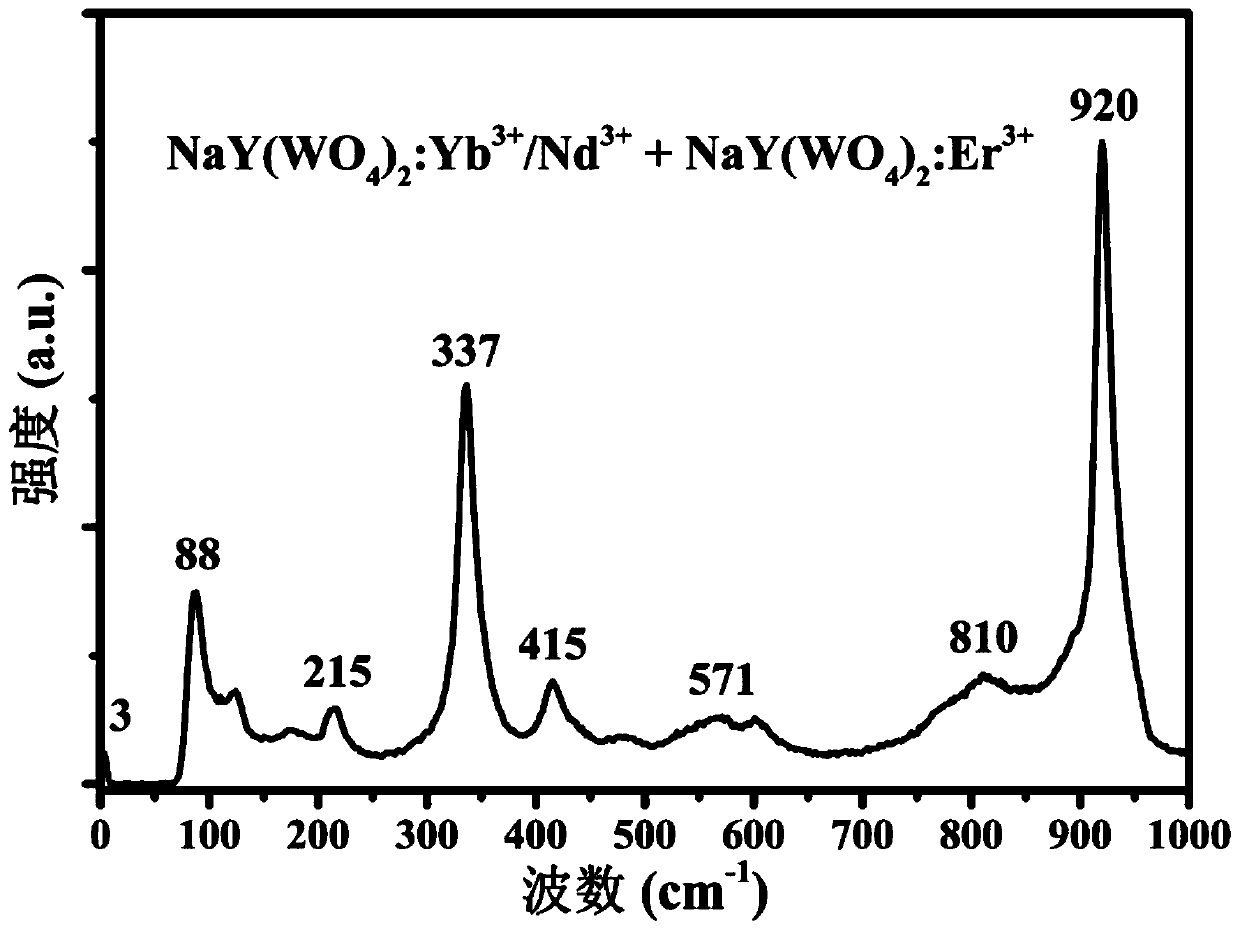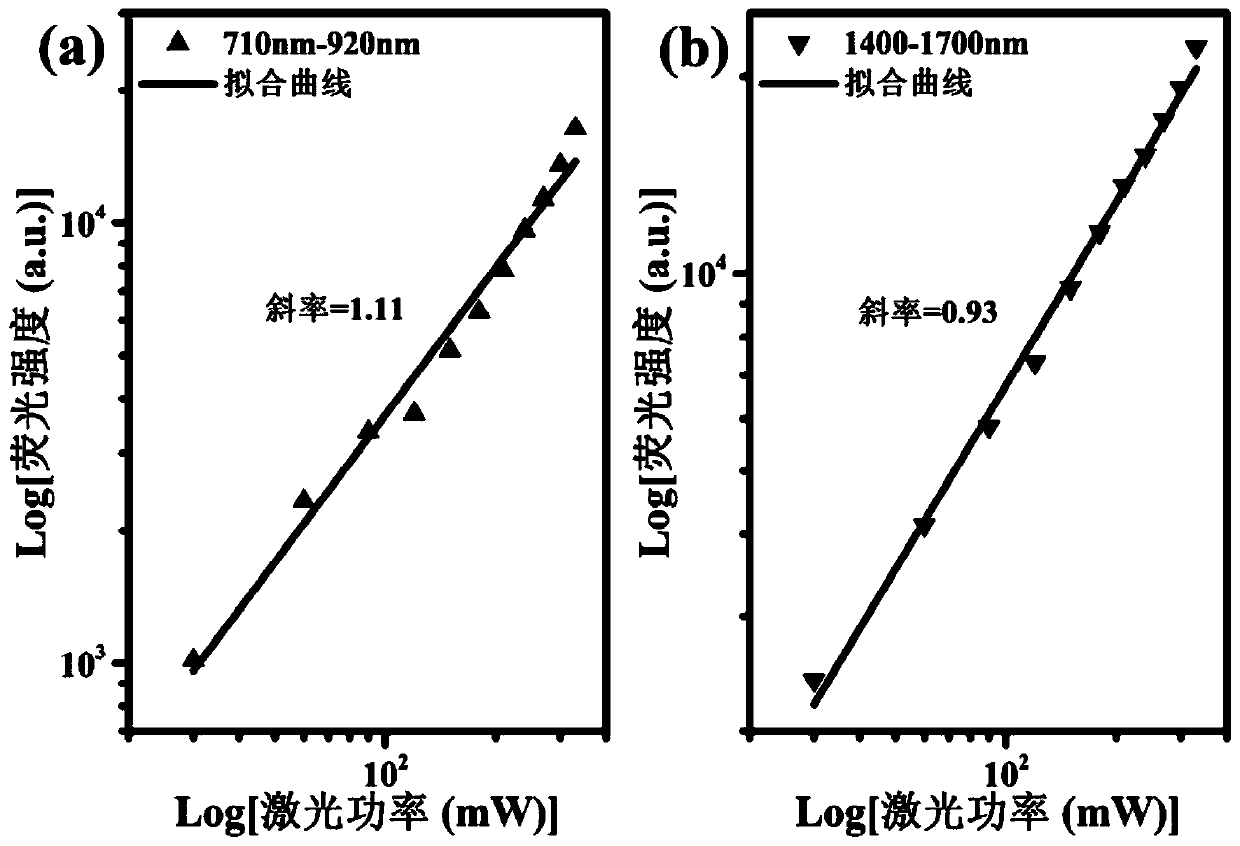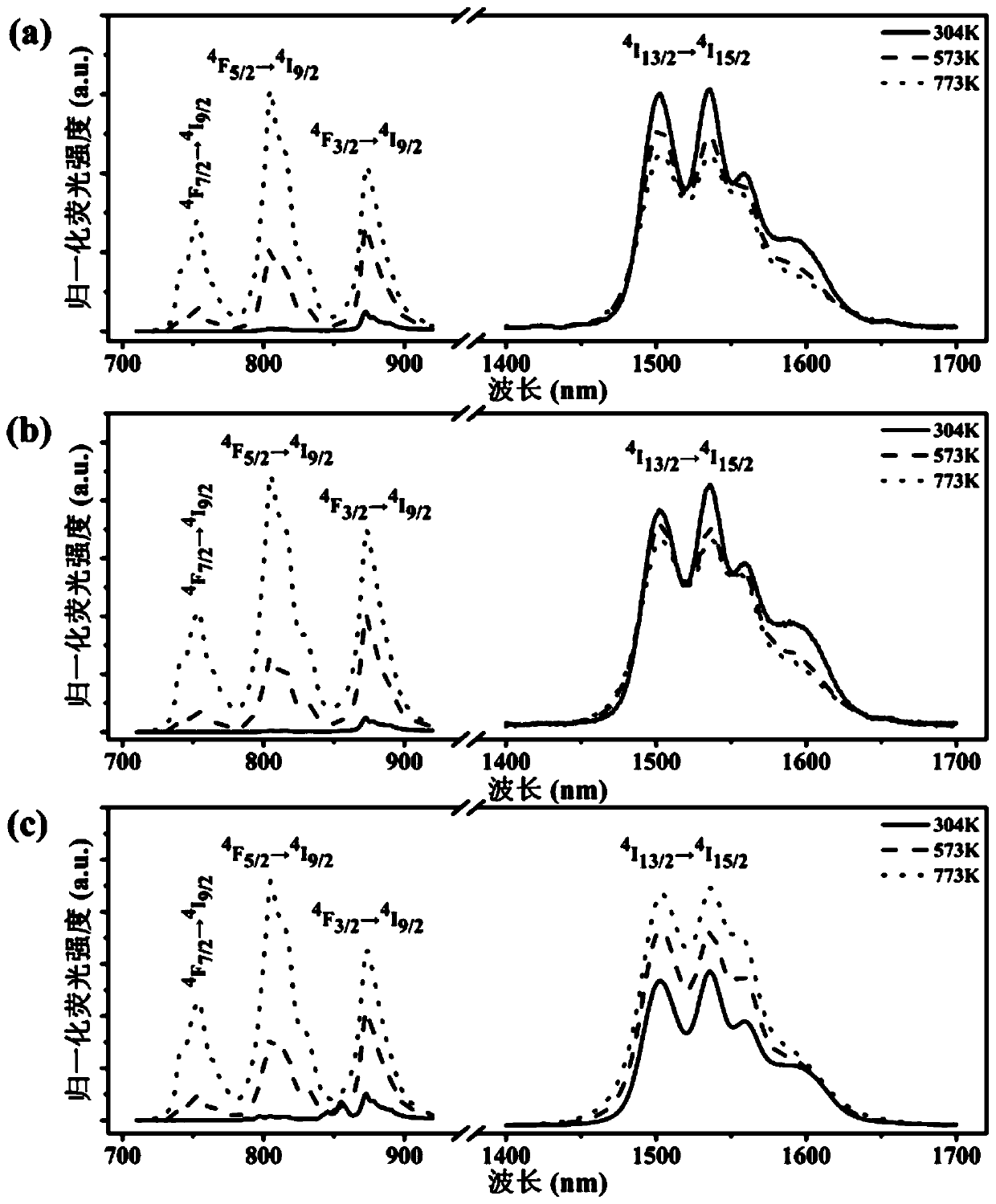High-sensitivity temperature measurement method based on near-infrared fluorescence of different rare earth ions
A high-sensitivity, rare-earth ion technology, applied in the field of rare-earth element fluorescence temperature measurement, can solve the problems of difficult signal processing, difficult division of fluorescent bands, and large measurement errors
- Summary
- Abstract
- Description
- Claims
- Application Information
AI Technical Summary
Problems solved by technology
Method used
Image
Examples
Embodiment 1
[0035] This embodiment discloses a high-sensitivity temperature measurement method based on near-infrared fluorescence of different rare earth ions, including the following steps:
[0036] Step 1. Accurately weigh Na on an electronic balance according to the molar ratio (mol%) of 100:400:88:10:2 2 CO 3 、WO 3 , Y 2 o 3 , Yb 2 o 3 and Nd 2 o 3 , and pour 5 kinds of drugs into the agate mortar body, mix and grind them evenly with a grinding rod (about 30min), then pour the mixed powder into a crucible and place it in a Si-C high-temperature furnace, and heat it at 1000°C for 4 After one hour, take out the crucible after the heating furnace is naturally cooled to room temperature, and NaY(WO 4 ) 2 : Yb 3+ / Nd 3+ Phosphor (Phosphor 1). At the same time, use the same method above to accurately weigh Na according to the ratio of 100:400:99:1. 2 CO 3 、WO 3 , Y 2 o 3 、Er 2 o 3 , accurately weigh Na according to the ratio of 100:400:87:10:2:1 2 CO 3 、WO 3 , Y 2 o ...
PUM
 Login to View More
Login to View More Abstract
Description
Claims
Application Information
 Login to View More
Login to View More - R&D
- Intellectual Property
- Life Sciences
- Materials
- Tech Scout
- Unparalleled Data Quality
- Higher Quality Content
- 60% Fewer Hallucinations
Browse by: Latest US Patents, China's latest patents, Technical Efficacy Thesaurus, Application Domain, Technology Topic, Popular Technical Reports.
© 2025 PatSnap. All rights reserved.Legal|Privacy policy|Modern Slavery Act Transparency Statement|Sitemap|About US| Contact US: help@patsnap.com



